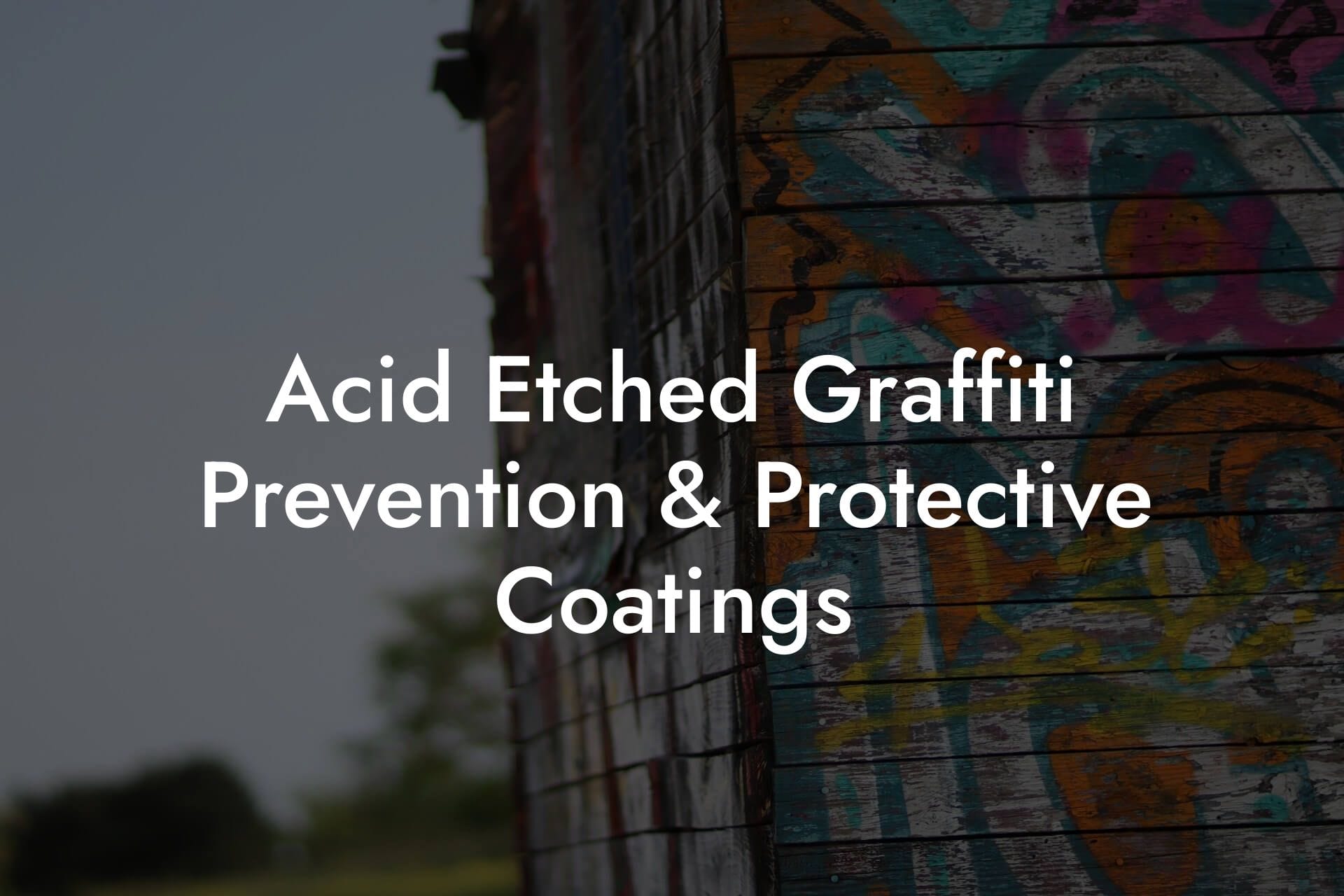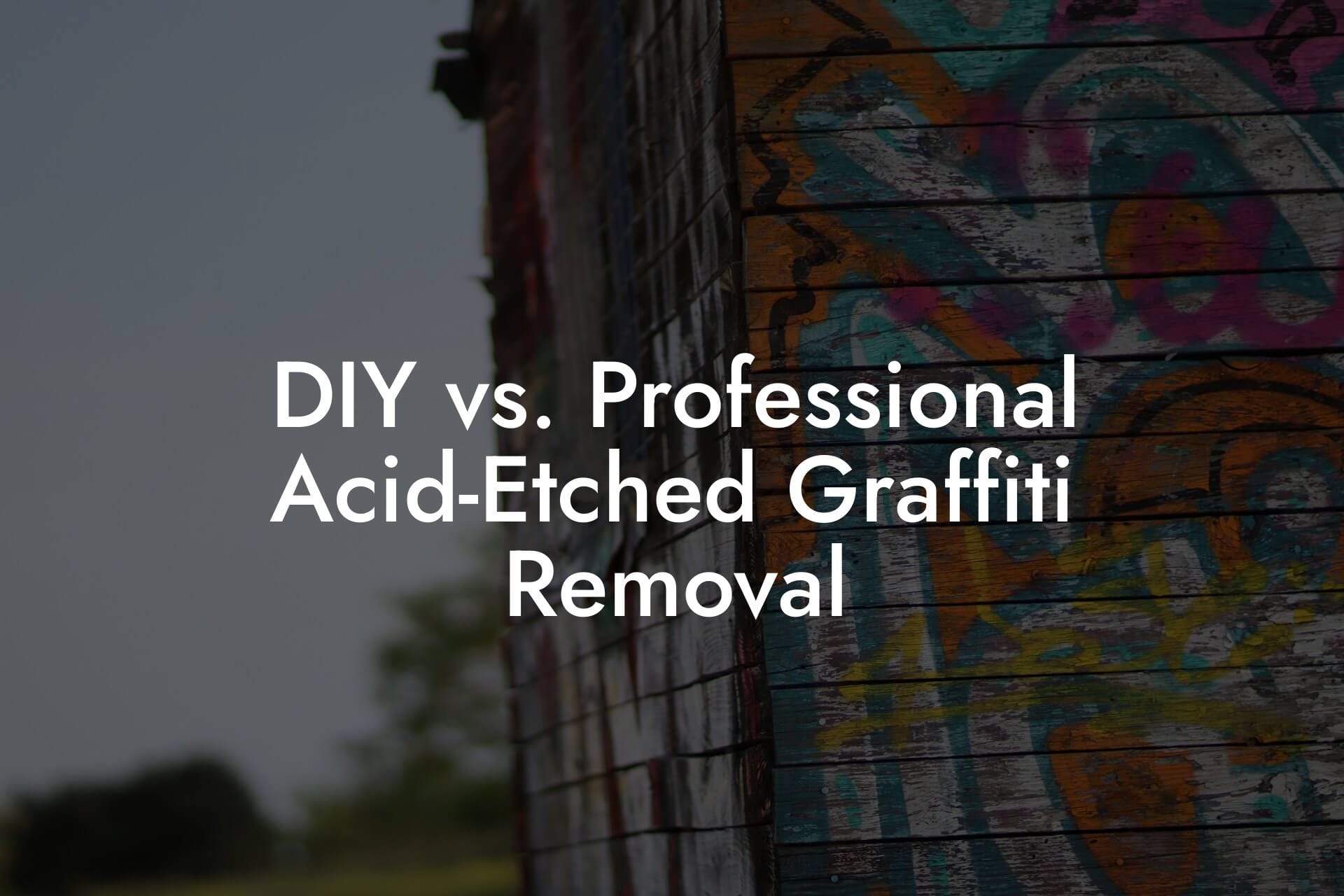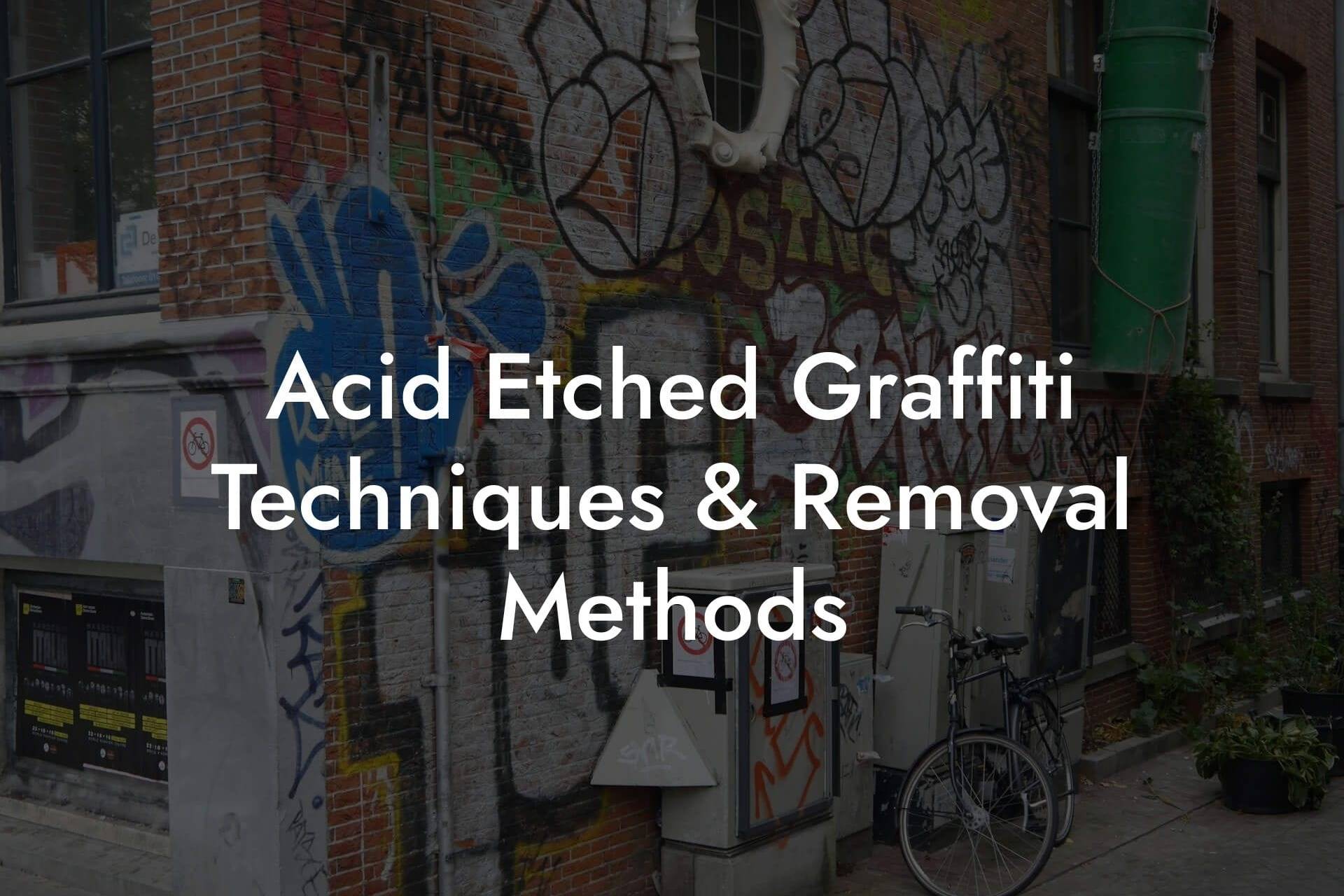Removing acid‑etched graffiti is a necessary process to restore aesthetics and protect structural integrity, but it often comes at an environmental and material cost. Strong acids, abrasive media and heavy machinery can harm soils, waterways, air quality and the very surfaces we aim to save. This guide explores in depth the environmental footprints of each acid etched graffiti removal method, the ways substrates can be altered or degraded, the regulatory frameworks that govern safe practice, and proven strategies to minimize ecological impact while preserving surface integrity. By understanding these trade‑offs, property owners and restoration specialists can implement sustainable workflows that safeguard both heritage and habitat.
Table of Contents
- Chemical Runoff, Wastewater and Watercourse Protection
- Sources and Composition of Contaminants
- Classification and Handling Protocols
- Dust Generation Mechanisms
- Estimating Energy Use
- Alternative Neutralizers and Chelators
- Micro‑Abrasion and Surface Roughness
- Chemical Exposure and Mineral Alteration
- Coating Performance and Compatibility
- Environmental Permitting Regulations
- COSHH and Workplace Exposure
- Conservation and Listed Building Consent
- Closed‑Loop Systems and Resource Efficiency
- Targeted, Non‑Invasive Workflows
- Community Engagement and Transparency
- Georgian Facade with Closed‑Loop Rinse
- Urban Underpass with Eco‑Gels and Dust Suppression
- Hazardous Waste Segregation and Disposal
- Airborne Particulates and Dust Control
- Energy Consumption, Emissions and Carbon Footprint
- Eco‑Friendly Consumables and Green Chemistry
- Substrate Alterations and Surface Integrity
- Regulatory and Compliance Frameworks
- Sustainable Best Practices and Innovations
- Case Studies: Low‑Impact Restoration in Practice
Chemical Runoff, Wastewater and Watercourse Protection
Neutralizing acid requires copious rinsing, which generates wastewater laden with salts, metal ions and residual chemicals. Without proper containment, runoff may enter storm drains or permeate soil, leading to elevated conductivity, pH swings and toxic concentrations in urban waterways. Even “biodegradable” reagents can over‑fertilize aquatic ecosystems, promoting algal blooms and oxygen depletion.
Sources and Composition of Contaminants
- Neutralizer salts (calcium, sodium, ammonium salts) can accumulate in sediment and ferment nitrification.
- Dissolved metals (iron, copper, lead) from corroded cladding or mortars pose chronic toxicity to invertebrates and fish.
- Residual surfactants and chelators (EDTA, citric acid) may persist beyond typical biodegradation windows, binding heavy metals and mobilizing them downstream.
Mitigation requires a closed‑loop rinse system: all wash‑water is vacuumed into a settling tank, solids are sedimented and filtered, and clarified water is reused or discharged only after pH (6.5–8.5), total dissolved solids (TDS) and metal concentrations meet local Environmental Permitting standards. Portable filtration units with multilayer media beds, including sand, activated carbon and ion‑exchange resins, allow on‑site treatment and reuse, reducing freshwater demand by up to 80%.
Hazardous Waste Segregation and Disposal
Spent abrasives, neutralizer slurries and acid residues qualify as hazardous under the UK Hazardous Waste Regulations. Improper mixing or disposal in municipal bins risks landfill leachate contamination and worker exposure during waste processing.
Classification and Handling Protocols
- Spent abrasive media (silica, glass beads, walnut shells) contaminated with acid salts must be stored in labeled drums with secondary containment.
- Neutralizer pastes and chelating gels require pH stabilization (<9) before consolidation; residual acidity or alkalinity reclassifies drums as hazardous.
- Filter cakes from wastewater treatment, often high in metal hydroxides, are hazardous and must be transported by licensed carriers.
Maintaining accurate waste transfer notes and Safety Data Sheets (SDS) ensures traceability. On‑site training in ADR packaging and spill response reduces leaks and emergency call‑outs. Many local councils provide skip hire with hazardous waste certification at discounted rates for registered contractors, streamlining costs and compliance.
Airborne Particulates and Dust Control
Mechanical removal techniques, micro‑sandblasting, diamond grinding, generate respirable dust containing crystalline silica, metal oxides and residual salts. Inhalation risks include silicosis, lung cancer and metal‑induced pneumonitis.
Dust Generation Mechanisms
- High‑velocity abrasive impact fractures substrate into sub‑10 μm particles.
- Dry blasting releases both fresh dust and re‑entrained residue from prior acid exposure.
- Diamond grinding vaporizes binder materials and releases fine stone slurry into the air when dry.
To contain dust, employ wet‑abrasion modes where a fine water mist suppresses dust at the point of impact, converting it into slurry. Local exhaust ventilation (LEV) systems attached directly to grinders or blast nozzles collect sludge into sealed HEPA‑filtered canisters. For large‑scale façade work, erect temporary negative‑pressure enclosures around the work area, expelling filtered air through inline scrubbers. Regular air monitoring, using real‑time particle counters and gravimetric sampling, confirms controls keep exposures below the COSHH action level of 0.1 mg/m³ for respirable silica.
Energy Consumption, Emissions and Carbon Footprint
Power‑hungry tools and transport logistics contribute to greenhouse gas emissions. Floor grinders, industrial vacuums, laser ablation units and mobile generators draw significant electricity, often from diesel sources on job sites.
Estimating Energy Use
- Diamond floor grinder (~3 kW) running 8 hours/day consumes 24 kWh, generating 12 kg CO₂ when powered by a UK grid mix.
- Laser ablation units (~5 kW peak) can double energy draw during intense bursts.
- Diesel generators (20 kVA) emit ~2.7 kg CO₂ per liter burned; a typical job may require 100 L fuel.
Mitigation focuses on equipment efficiency and clean energy. Swap diesel generators for electric mains where possible; schedule off‑peak charging of battery‑powered tools when grid emissions intensity is lowest; optimize fleet routing to minimize site visits; and consolidate multiple small jobs into single mobilizations. Some UK contractors invest in solar‑powered battery banks on trailers, cutting on‑site emissions by 40% over a six‑month season.
Eco‑Friendly Consumables and Green Chemistry
Traditional reagents often rely on petrochemical‑derived surfactants and solvent carriers. Emerging green chemistries offer comparable performance with lower toxicity, biodegradability and reduced aquatic persistence.
Alternative Neutralizers and Chelators
- Citric acid (food‑grade) replaces EDTA for mild metal chelation; it biodegrades rapidly in wastewater treatment systems.
- Plant‑derived surfactants (e.g., alkyl polyglucoside) boost penetration without nonylphenol ethoxylate residues.
- Bio‑based polymer gels, derived from cellulose, adhere to vertical surfaces and biodegrade into harmless sugars.
Sealers and coatings can also reduce impact. Water‑based silane/siloxane systems with low VOC (<10 g/L) replace solvent‑borne formulations, cutting urban smog precursors. Sacrificial films made from biodegradable polyester can be composted post‑use rather than landfilled.
Substrate Alterations and Surface Integrity
Every removal method physically or chemically alters the substrate. Understanding these effects is critical for ensuring long‑term durability and aesthetic consistency.
Micro‑Abrasion and Surface Roughness
- Micro‑sandblasting removes 0.1–0.5 mm per pass, subtly enlarging pores and increasing surface roughness (Ra values may double).
- Rougher textures absorb more water, exacerbating freeze‑thaw spalling in temperate climates.
- On polished stone, matte etch marks stand out unless repolished to original gloss (requiring additional machinery and coatings).
Remedy with staged polishing: follow abrasive removal with sequential pads (400–3000 grit) to bring Ra back within ±10% of original. For porous masonry (limestone, sandstone), flood‑seal with a penetrating silane that fills enlarged pores while maintaining vapor permeability. Periodic water absorption tests confirm refill success, normalized capillary uptake rates indicate restored porosity.
Chemical Exposure and Mineral Alteration
- Acid neutralization can leave behind carbonation products (e.g., calcium carbonate recrystallization) that manifest as efflorescence or whitening.
- Residual chelating agents may bind essential trace elements in stone matrices, subtly altering color or luster over months.
- Hard water rinses can deposit calcium and magnesium salts, creating mottled surface halos around treated areas.
Prevent these effects by rinsing with deionized water and drying surfaces rapidly using low‑pressure air blowers. Monitor long‑term color stability with periodic spectrophotometer readings (every 3–6 months) and treat emergent efflorescence with mild acid dips (pH 3 citric acid) followed by wet vacuum recovery.
Coating Performance and Compatibility
- Applying sealers over improperly neutralized surfaces traps residual salts, promoting underfilm corrosion and coating delamination within 6–12 months.
- Incompatible primers may react with substrate minerals, forming visible bloom or tacky films.
- Some fluoropolymer finishes can slightly darken light‑colored stone, altering reflectance by up to 5%.
Choose high‑breathability coatings (Sd ≤0.5 m) with documented salt tolerance and UV stability. Conduct small‑area adhesion and color surveys before full application. Specify reversible sacrificial coatings on heritage façades to allow future removal without abrasion.
Regulatory and Compliance Frameworks
Adhering to regulations reduces environmental impact and legal risk. Key frameworks include:
Environmental Permitting Regulations
Discharges of treated rinse water may require permits if volumes exceed 5 m³/month or if pollutants exceed consent thresholds. Consult the Environment Agency and local water authorities for site‑specific consents. Maintain effluent logs detailing pH, TDS, turbidity and metal concentrations.
COSHH and Workplace Exposure
Control of Substances Hazardous to Health mandates risk assessments for acids, solvents and silica dust. Conduct exposure monitoring at least annually; provide medical surveillance for technicians exposed above action levels. Store SDS and COSHH assessments on-site and train staff in emergency response drills.
Conservation and Listed Building Consent
Works on listed or historically significant structures often require prior approval by conservation officers. Treatments that remove more than 2 mm of original fabric or apply irreversible coatings may be restricted. Submissions should include detailed method statements, impact assessments and trial panel results.
Sustainable Best Practices and Innovations
Closed‑Loop Systems and Resource Efficiency
- Mobile water recycling units reclaim 90% of rinse water, reducing mains consumption.
- Spent abrasive dryers recover up to 70% of media for re‑use.
- Solar‑charged battery banks power portable tools, cutting diesel use.
Targeted, Non‑Invasive Workflows
- Spot treatment gels applied only to etched lines save materials and reduce runoff volume.
- Laser ablation for micro‑etch marks avoids bulk abrasion, preserving 100% of surrounding fabric.
- Rapid‐response small teams minimize site disturbance and mobilization emissions.
Community Engagement and Transparency
Publishing environmental performance data, in annual sustainability reports or project case studies, builds trust with clients and regulators. Community workshops on graffiti prevention and removal demonstrate social responsibility and deter future vandalism. Collaborative art initiatives can redirect tagging energy into positive outlets, reducing acid‑etch incidents over time.
Case Studies: Low‑Impact Restoration in Practice
Georgian Facade with Closed‑Loop Rinse
A Grade I‑listed townhouse in Kensington suffered shallow acid etch across Portland stone balustrades. The DUA London team implemented a closed‑loop rinse: all water captured, filtered through a three‑stage media bed, and reused for neutralization. No effluent was discharged. Final polishing with 800‑grit pads restored original finish, and a breathable silane sealer was applied. Total mains water saving: 4 000 L; effluent discharge: zero.
Urban Underpass with Eco‑Gels and Dust Suppression
A Southwark pedestrian tunnel was targeted repeatedly. Traditional dry blasting exacerbated dust complaints. In response, the crew switched to a biodegradable cellulose gel for neutralization and wet micro‑sandblasting at 1 bar with walnut shell media. Misting nozzles suppressed 95% of dust. Community feedback highlighted cleaner air and quieter operations. Graffiti recurrence dropped by 60% after protective sacrificial film application.
Effective acid‑etched graffiti removal need not come at the expense of environmental health or surface integrity. By embracing closed‑loop rinse systems, wet‑abrasion and HEPA‑filtered containment, energy‑efficient power sources and green chemistries, restoration teams can dramatically reduce water use, waste generation and air pollution. Rigorous assessment of substrate changes, porosity, roughness, color and coating compatibility, ensures high‑quality, long‑lasting results with minimal material loss. Adherence to regulatory requirements and transparent reporting further solidifies client confidence and community goodwill. Through these sustainable practices, DUA London and others can protect both heritage façades and the ecosystems that surround them, forging a truly holistic approach to graffiti remediation.
Toby Doherty
Toby Doherty is a seasoned graffiti removal expert with over 20 years of experience in the industry. Throughout his career, Toby has helped countless businesses and property owners in London maintain clean, graffiti-free spaces. His extensive knowledge of graffiti removal techniques, from eco-friendly solutions to advanced technologies like laser cleaning, makes him a trusted authority in the field. Passionate about restoring urban environments, Toby combines his hands-on expertise with a commitment to staying up-to-date on the latest industry trends and innovations. When he’s not out in the field, Toby shares his insights through detailed articles, offering practical advice on everything from graffiti prevention to legal considerations.



